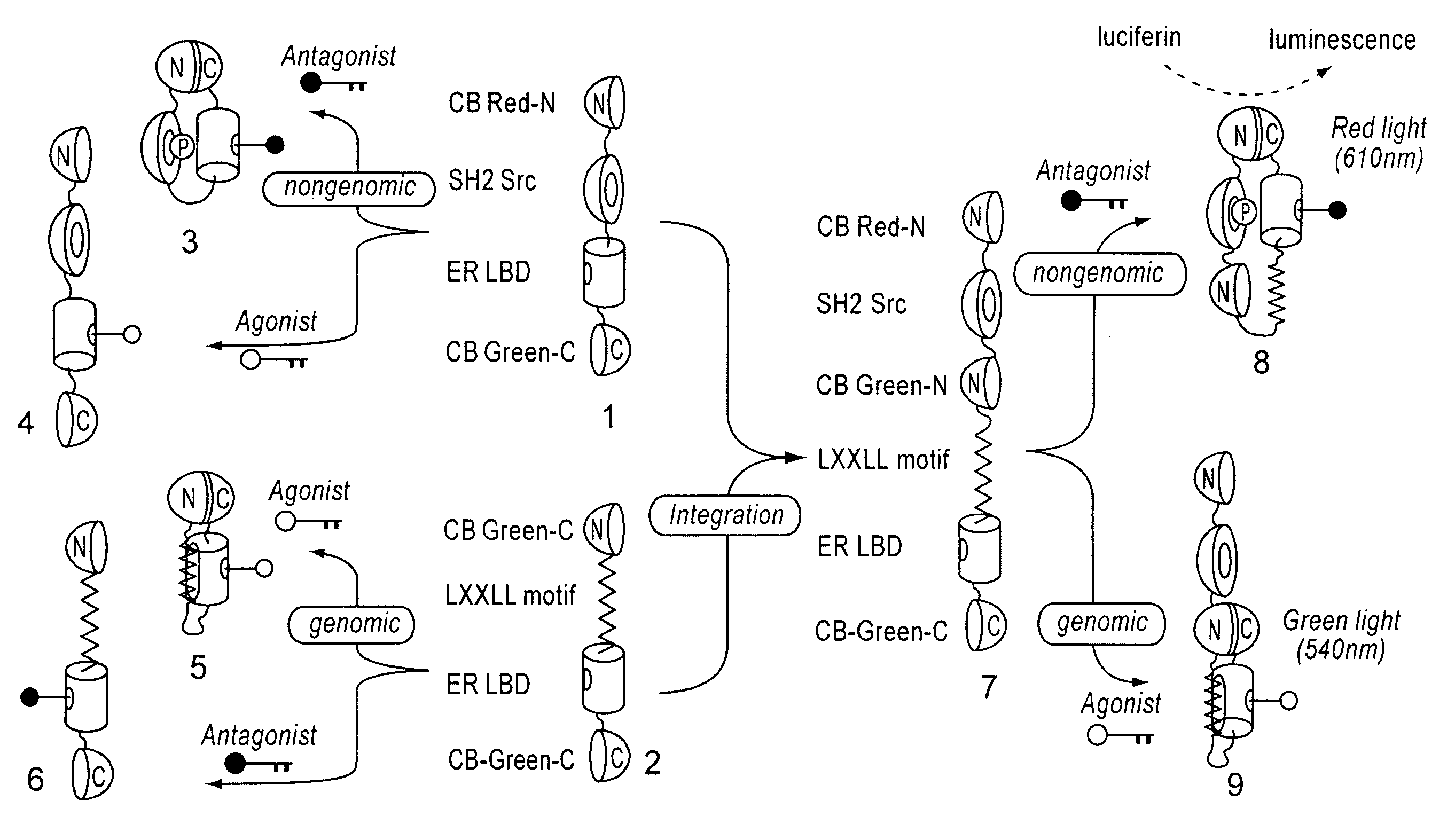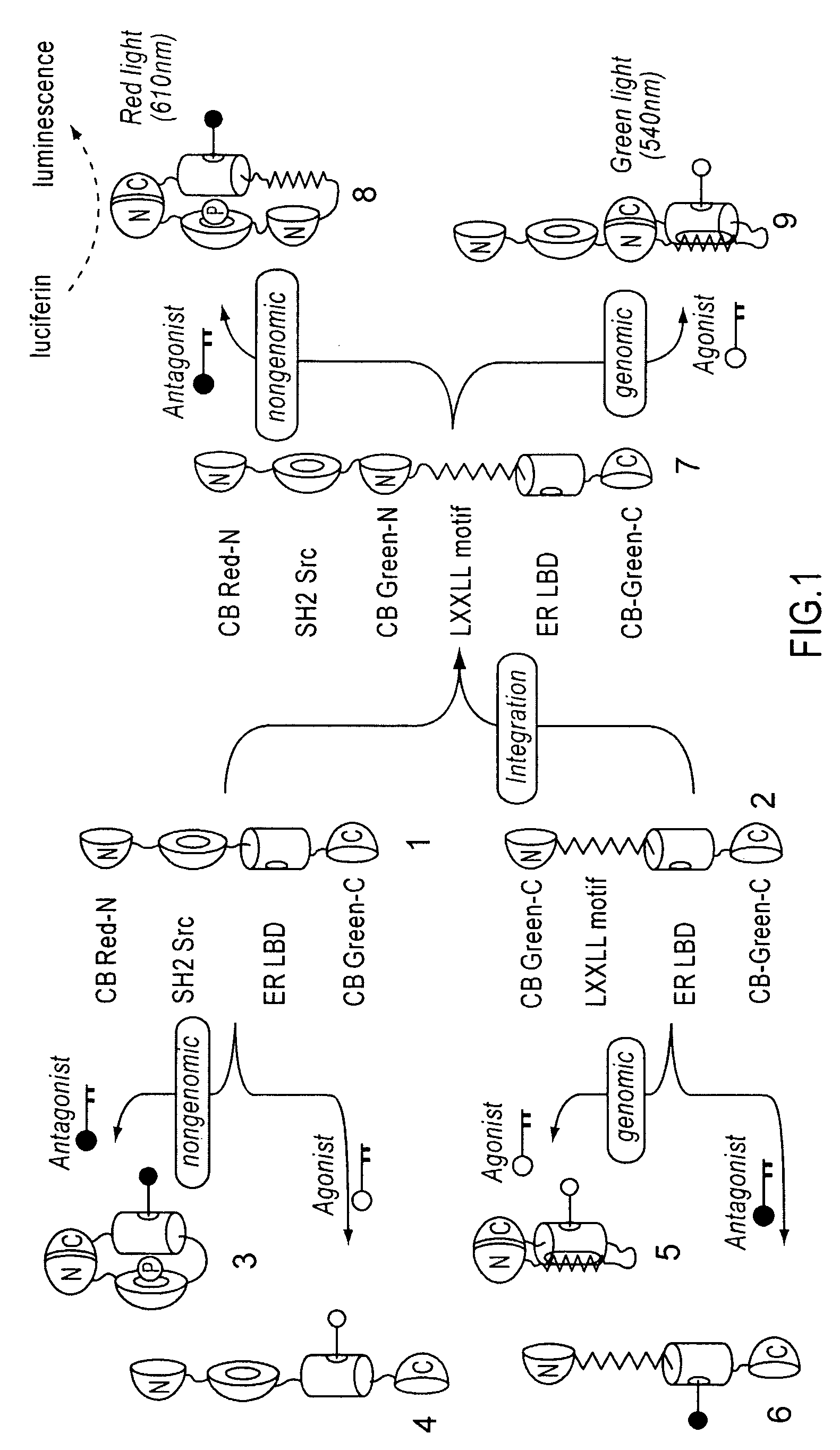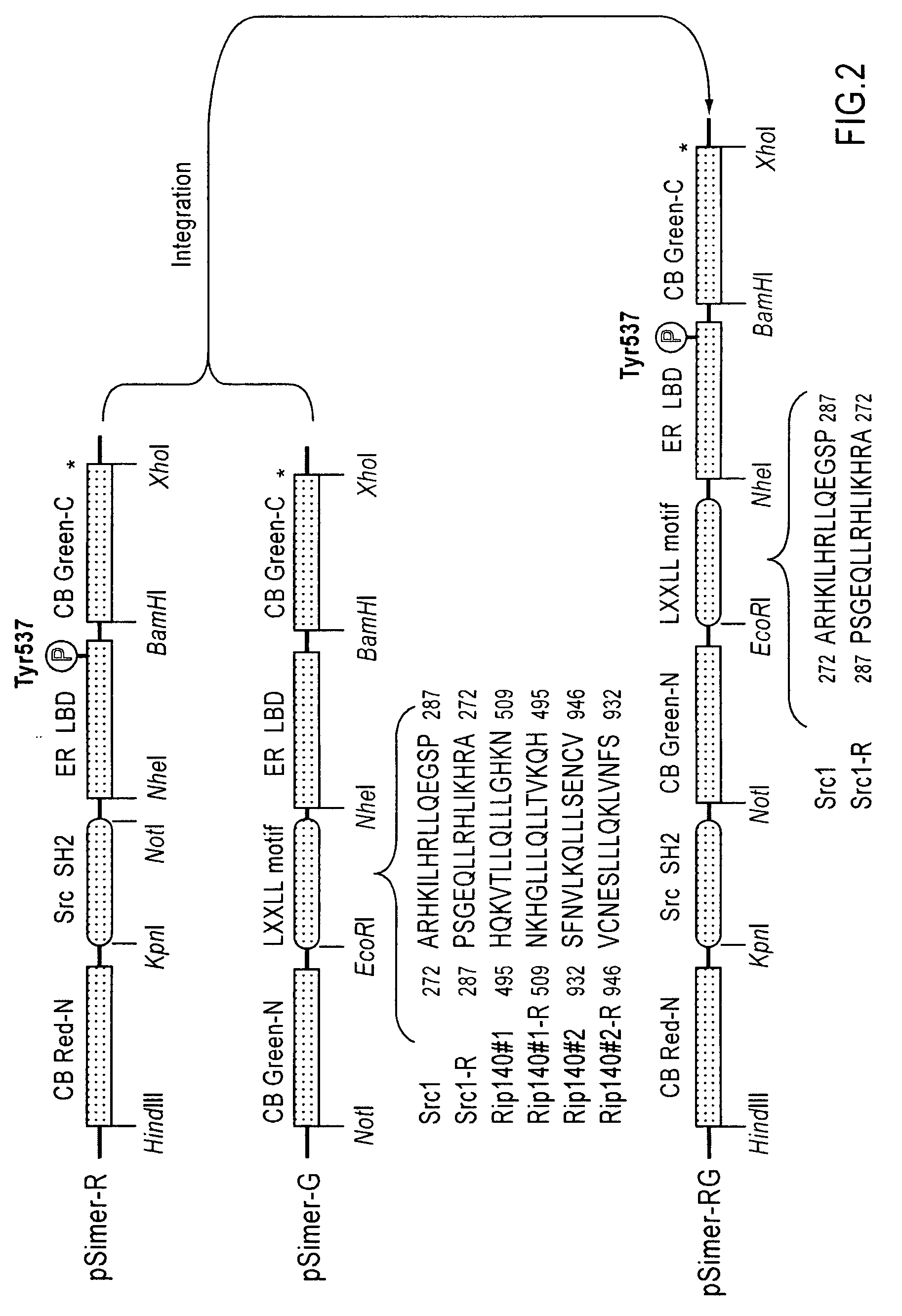Multicolor bioluminescent visualization probe set, or single-molecule-format multicolor bioluminescent visualization probe
a bioluminescent and probe technology, applied in the field of multicolor bioluminescent probes or single molecule-format multicolor bioluminescent probes, can solve the problems of difficult detection of target proteins/lipids, life phenomena, and high cost of facilities, and achieve high sample throughput, rapid and accurate detection, and high screening speed
- Summary
- Abstract
- Description
- Claims
- Application Information
AI Technical Summary
Benefits of technology
Problems solved by technology
Method used
Image
Examples
example 1
Construction of Plasmid Encoding Single-Molecule-Format Bioluminescent Probe Set
(1-1) Construction of Nucleic Acids Encoding Single-Molecule-Format Bioluminescent Probe Emitting Red Light by Phosphorylation-Dependent Protein-Protein Interaction
[0078]cDNAs of ER LBD (305-550 AA) and phosphorylation-recognition domain of Src (SH2) were amplified by PCR, and specific restriction sites were introduced at both ends. Recombinant DNAs in which cDNAs encoding ER LBD and Src SH2 were connected to each other were produced by ligation. Subsequently, the cDNAs encodes full CB Red were fragmented at five different points roughly localizing a sequence region encoding hydrophilic amino acids around 4 / 5 from the beginning of the cDNAs. As a result, five sets of cDNA fragments of CB Red (CB Red-N and CB Red-C) were created. Between the N- and C-terminal fragments (CB Red-N and CB Red-C, respectively) of these five sets, the connected components, Src SH2-ER-LBD, were inserted. Consequently, DNA const...
example 2
Gene Tansfection of Plasmid Expressing Single-Molecule-Format Bioluminescent Probe into Living Cells
[0081]COS-7 cells derived from African Green Monkey's kidney were cultured in Dulbecco-modified Eagle's medium (DMEM; Sigma) supplemented with 10% steroid-deficient fetal bovine serum (FBS) and 1% penicillin-streptomycin (P / S), and incubated in a 12-well plate in a cell incubator at 37° C. and 5% CO2. Using TransIT-LT1 (mirus), commercially available gene transfection kit pSimer-G, pSimer-R, or pSimer-RG series plasmids were transfected into COS-7 cells in the 12-well plate. The COS-7 cells containing respective plasmids were incubated in a cell incubator for 16 hours, allowed to sufficiently express respective bioluminescent probes, and used in the following experiments.
example 3
Determination of Optimal Dissection Site in CBLuc-Red for Red Luminescent Probe Used for Measuring Protein Phosphorylation (pSimer-R Series)
[0082]As shown in the above (Example 2), plasmids of pSimer-R1 through —R5 were transfected into COS-7 cells respectively, incubated for 16 hours, and allowed to sufficiently express the bioluminescent probes. Intensity of luminescence emitted by 20 minutes-stimulation was measured by luminometer, provided OHT (4-hydroxytamoxifen), which is a commercially available anticancer drug, is present and absent. As a result, it was observed that cells carrying pSimer-R2 showed the strongest luminescence intencsity in the presence of OHT (FIG. 3).
[0083]This result demonstrates that the optimal dissection point of CBLuc-Red is that of pSimer-R2 (between 412 and 413 AA).
[0084]Further, measurement of the light spectrum from cells carrying pSimer-R2 with all wavelengths showed that the wavelength of the luminescence was about 610 nm (FIG. 4).
PUM
| Property | Measurement | Unit |
|---|---|---|
| Ratio | aaaaa | aaaaa |
| Wavelength | aaaaa | aaaaa |
| Luminescence | aaaaa | aaaaa |
Abstract
Description
Claims
Application Information
 Login to View More
Login to View More - R&D
- Intellectual Property
- Life Sciences
- Materials
- Tech Scout
- Unparalleled Data Quality
- Higher Quality Content
- 60% Fewer Hallucinations
Browse by: Latest US Patents, China's latest patents, Technical Efficacy Thesaurus, Application Domain, Technology Topic, Popular Technical Reports.
© 2025 PatSnap. All rights reserved.Legal|Privacy policy|Modern Slavery Act Transparency Statement|Sitemap|About US| Contact US: help@patsnap.com



